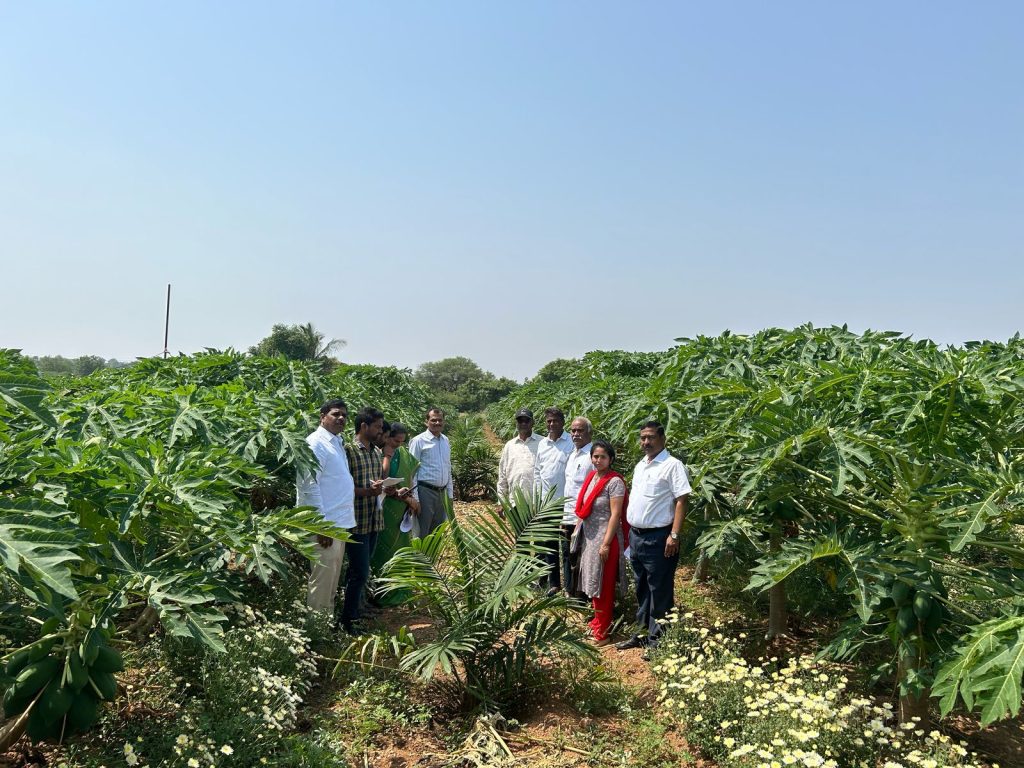
The field of farmer Narasimha Reddy in Velda Jarla village (Keshampet & Farrukhnagar mandals) presents an excellent example of integrated farming practices, where oil palm plantations are combined with intercropped papaya. This approach reflects not only efficient land use but also highlights the adaptability of farmers in adopting sustainable agricultural methods.
Oil palm is a long-duration crop with an initial non-bearing period of 3–4 years, during which the farmer receives little to no direct returns from the plantation. To bridge this gap, papaya has been introduced as an intercrop in the spaces between young oil palm plants. Papaya, being a fast-growing and high-value fruit crop, begins yielding within a year of planting. This provides farmers with a steady and immediate income stream while waiting for the oil palm to mature.
The benefits of intercropping go beyond short-term earnings. Papaya plants contribute organic matter to the soil through leaf litter, which helps improve soil fertility and microbial activity. Their canopy cover suppresses weed growth, reducing labor and input costs for weed management. The shade from papaya also aids in better moisture conservation, particularly in dry spells, thereby enhancing the resilience of the cropping system.
Moreover, the practice of integrating fruit crops with oil palm creates a diversified farming model that reduces risk. Farmers are not solely dependent on the returns from a single crop, and the year-round papaya harvest ensures continuous cash flow for household needs and reinvestment in farm activities. In addition, intercropping supports better land productivity, as the available space between oil palm rows—which would otherwise remain underutilized—is effectively used.
